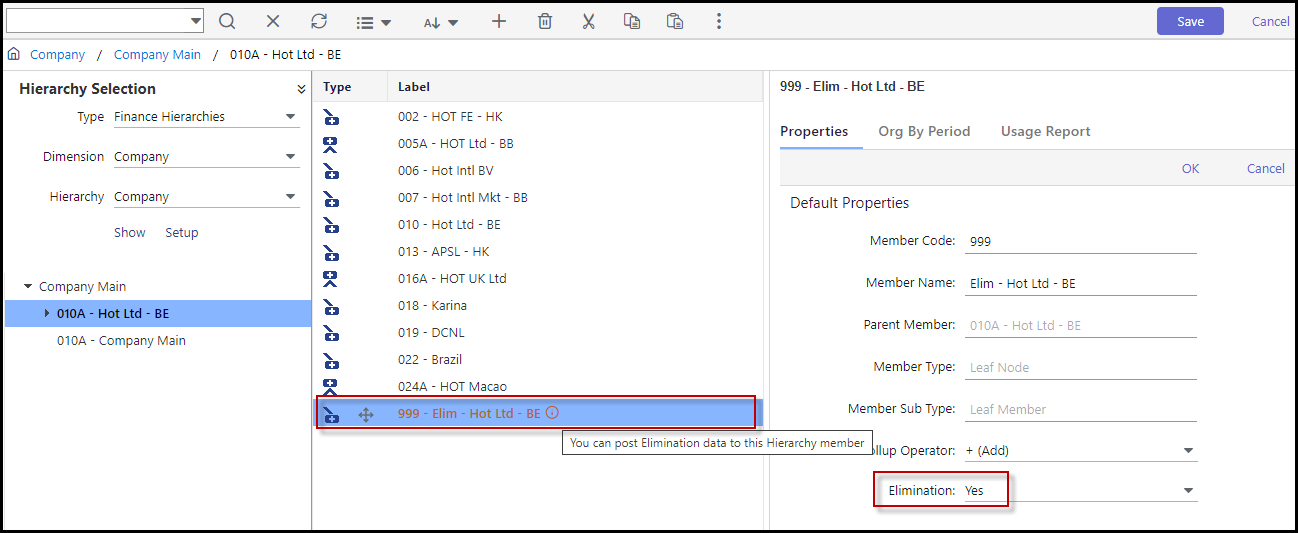Alternate Hierarchy Use Case - Intercompany Eliminations with Multiple Hierarchies
- 1 Minute to read
- Print
- DarkLight
- PDF
Alternate Hierarchy Use Case - Intercompany Eliminations with Multiple Hierarchies
- 1 Minute to read
- Print
- DarkLight
- PDF
Article summary
Did you find this summary helpful?
Thank you for your feedback
For reporting purposes, there may be a need to create multiple company hierarchies with different intercompany elimination requirements. This section discusses how to accommodate additional hierarchies and best practices associated with intercompany eliminations and reporting in Planful.
In Practice
- You have a Legal Company hierarchy and another hierarchy for Management reporting, but intercompany eliminations for both hierarchies are different because of the way the companies are grouped for reporting purposes.
- You have a consolidated company view and a consolidated division view (where companies are grouped by division), but intercompany eliminations between the two views are not unique.
Solution
The following is a description of a Managed Rollup (Hierarchy 1) and a Divisional Rollup (Hierarchy 2).
In Hierarchy 1, the elimination entries need to be posted to Elim1 whereas in Hierarchy 2, the elimination entries need to be posted to elimination companies Elim2, Elim3, and Elim4.
To handle this requirement in Planful, complete the following steps:
- Setup one of these hierarchies as the Main hierarchy and the other as an Alternate hierarchy in Hierarchy Management.
- Set up elimination companies in the Main hierarchy to support the consolidation requirements of that structure.
- Flag a company as an elimination company on an Alternate hierarchy (even though this same company is set up as a non-elimination company on the Main hierarchy) to support the consolidation requirements of that structure.
- Run the Elimination process. Based on where the elimination companies are placed in the respective hierarchies (Main or Alternate), the system will eliminate properly and populate the data against the elimination companies in each hierarchy to support complete reporting requirements.
- Generate the different reporting views based on the hierarchy selected. Selecting the required hierarchy (Main or Alternate) will determine the eliminating companies displayed on the report.Note:Elimination of companies in the main company hierarchy requires a new code for the alternate hierarchies.
- When a member has the Elimination property set to Yes, you can identify the member distinctly in the list with its maroon font color along with a tooltip that suggests you can post-elimination data to this particular Hierarchy member.

Was this article helpful?

